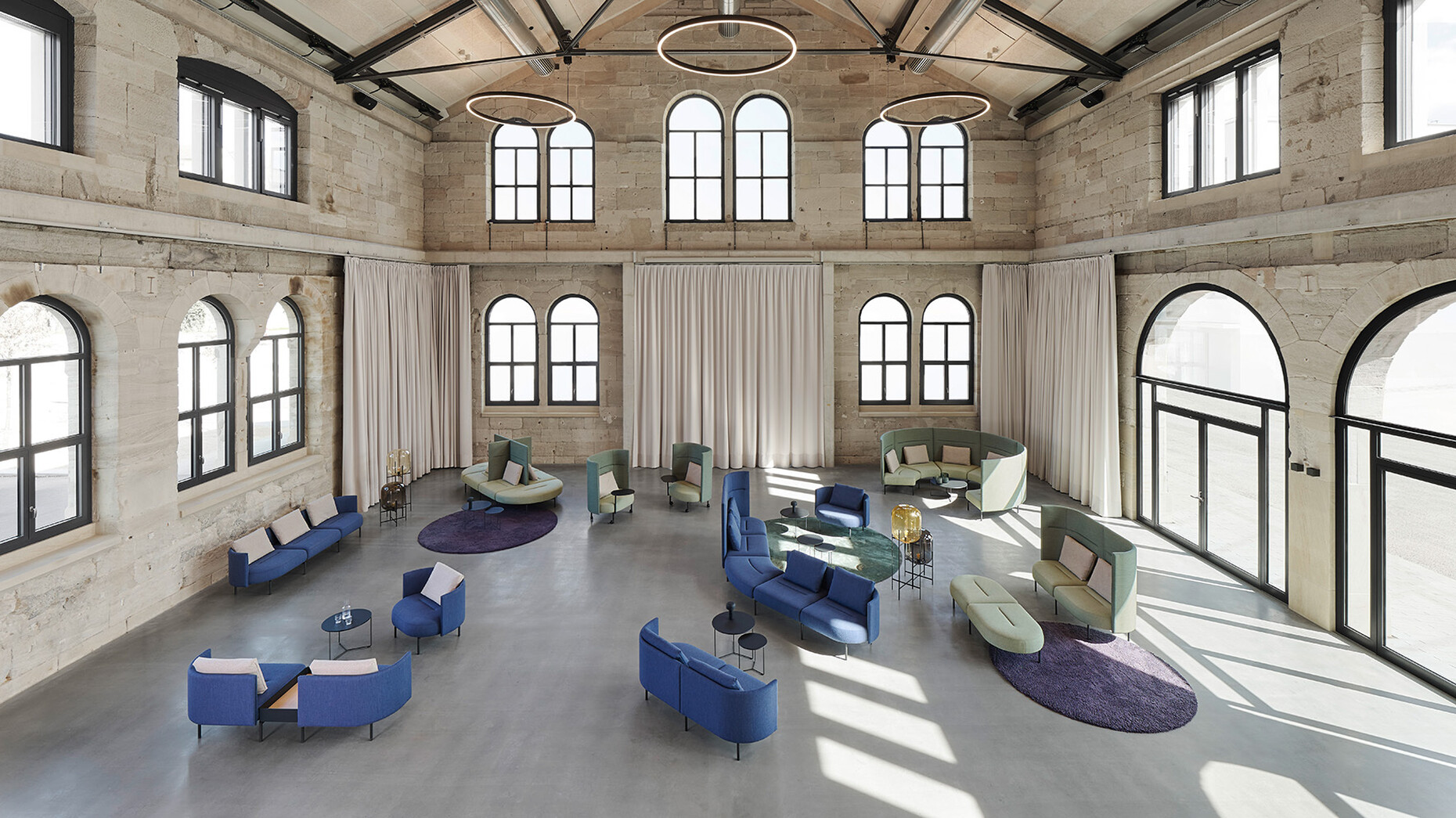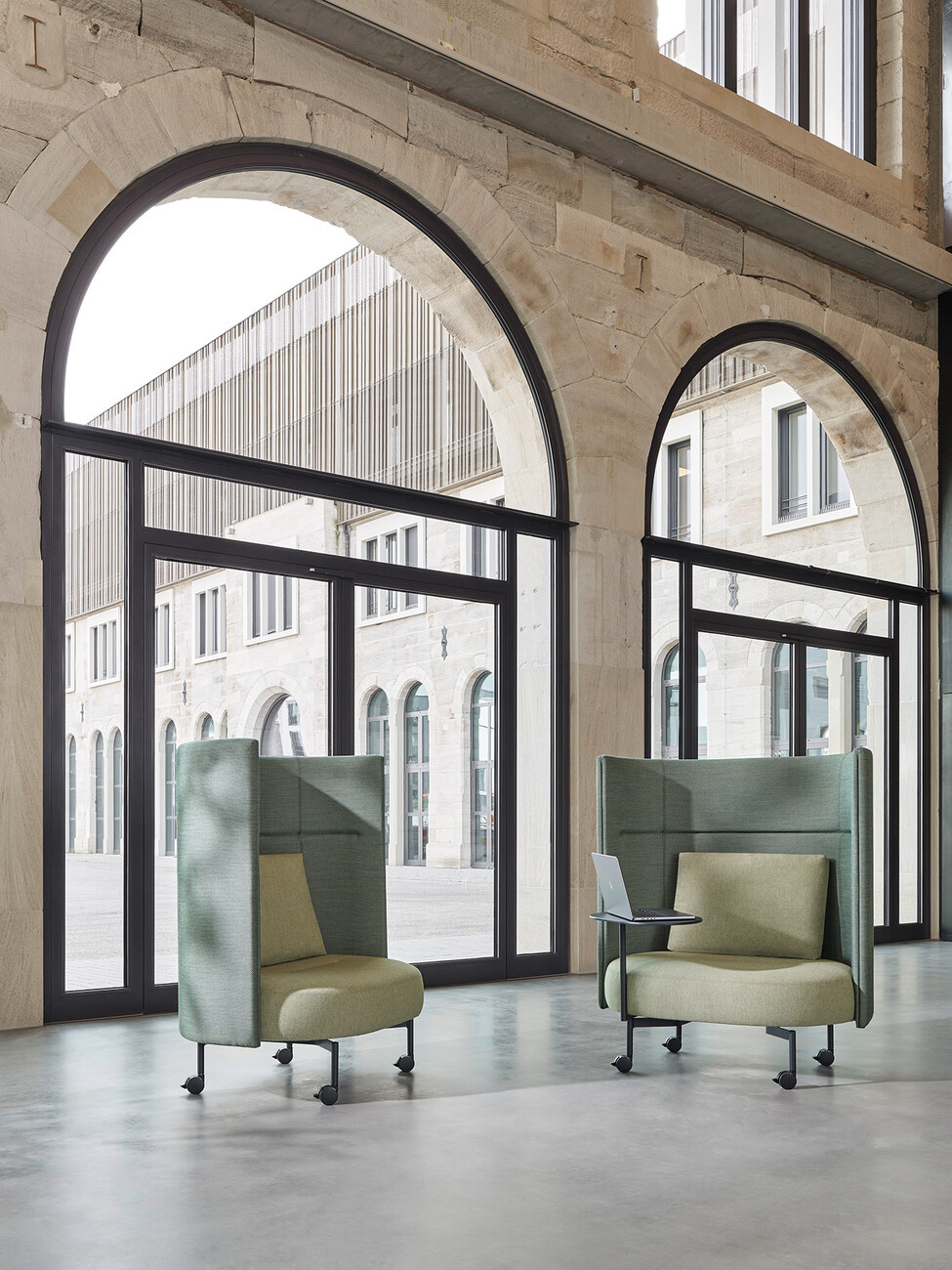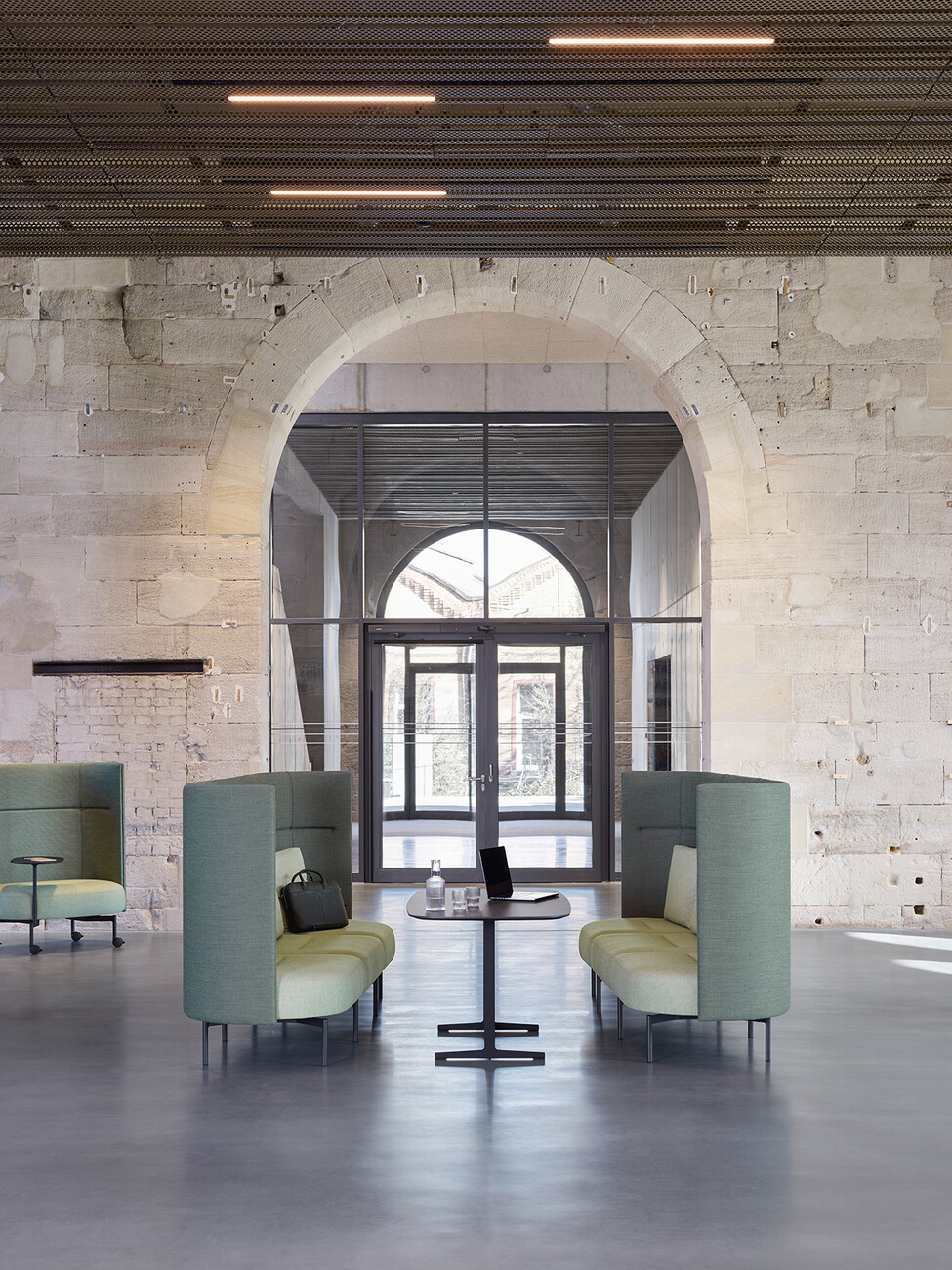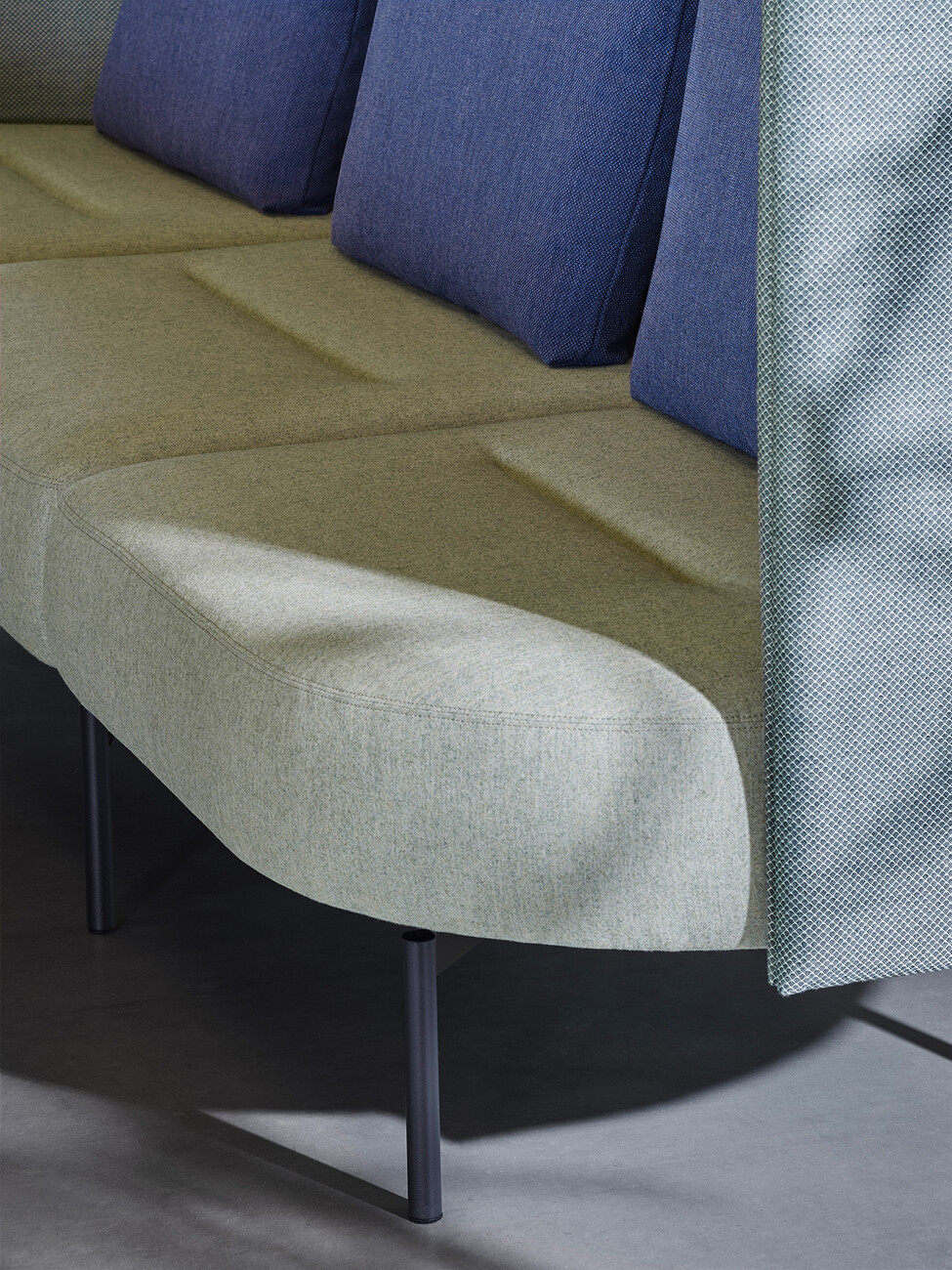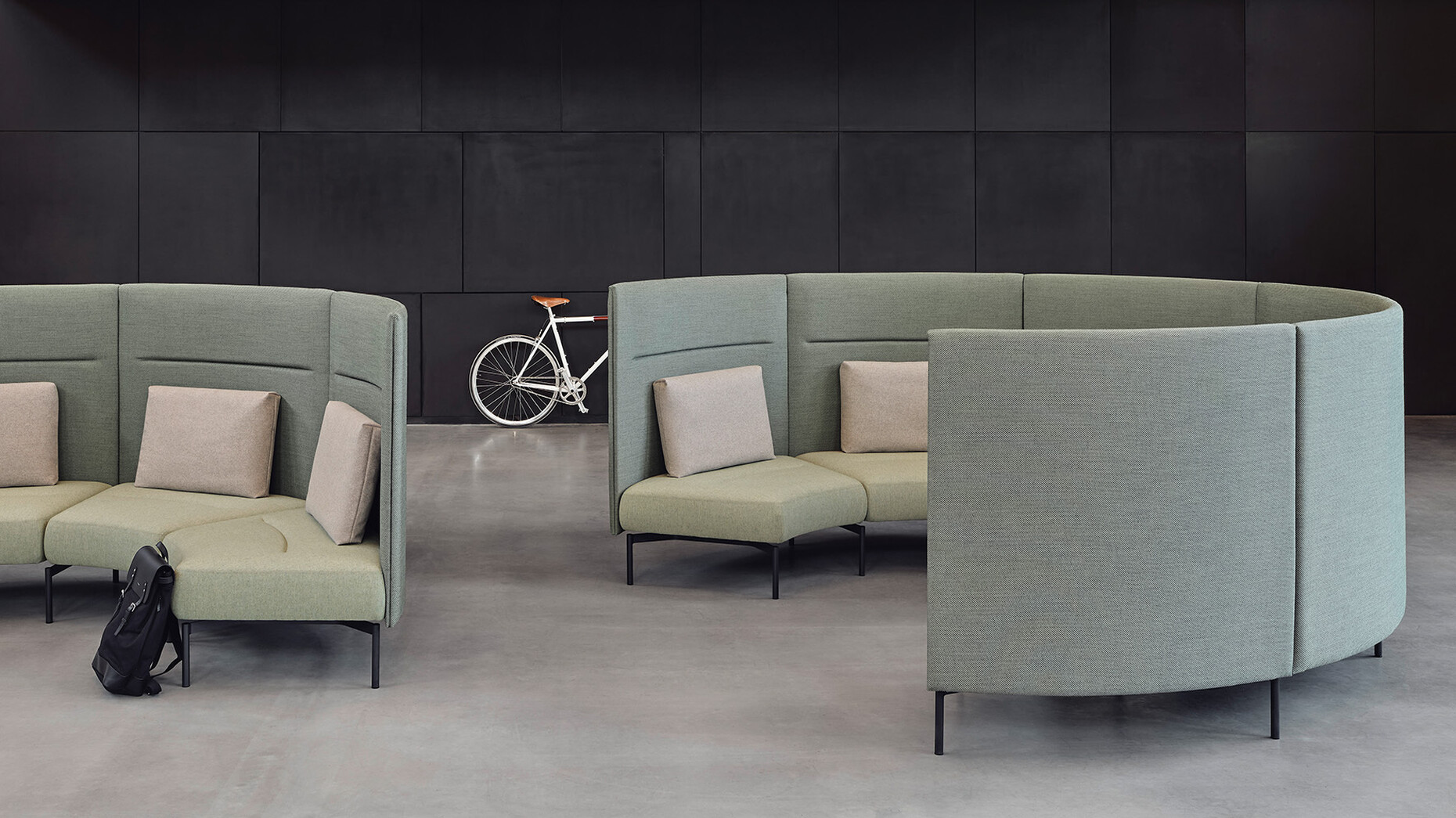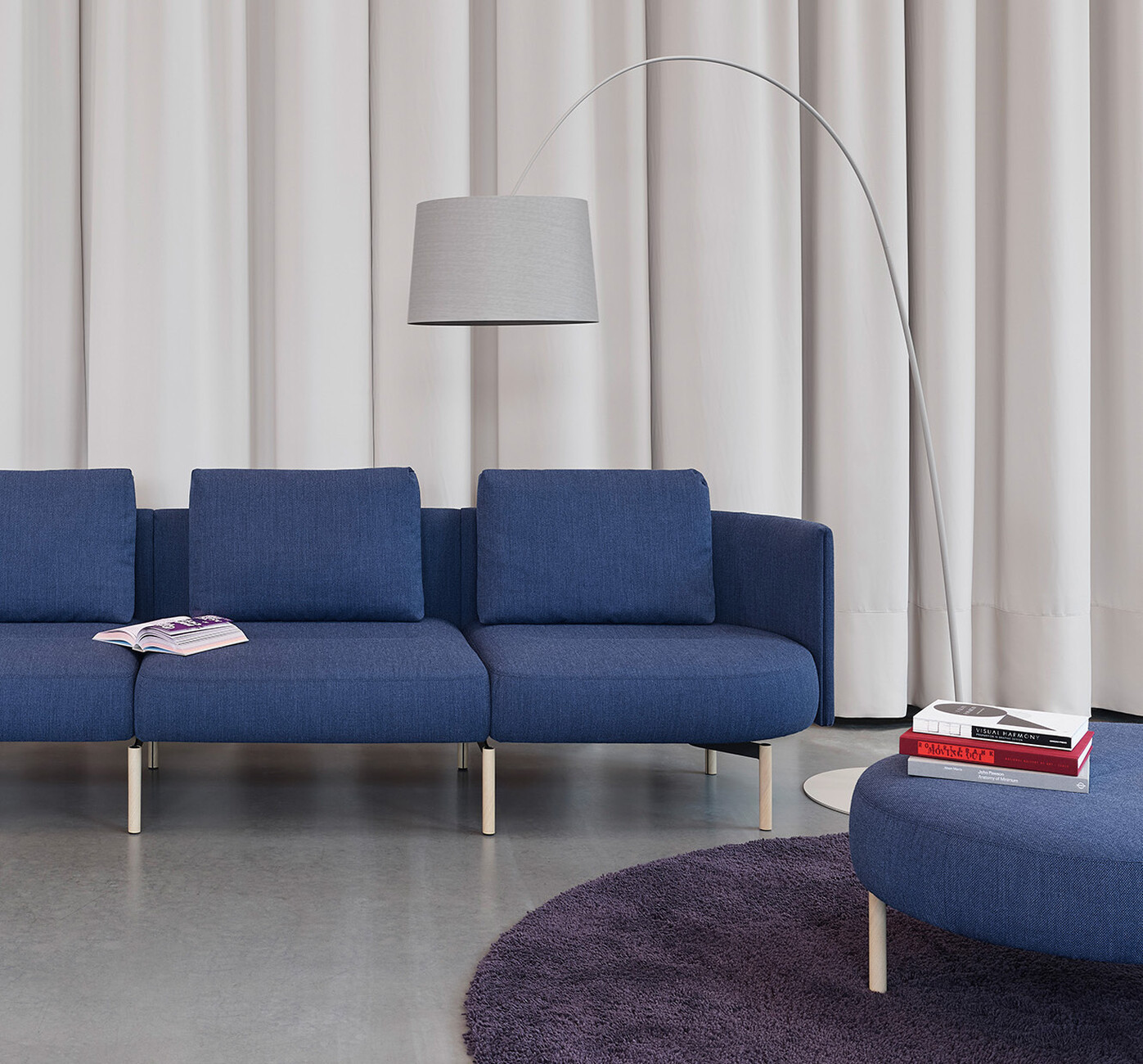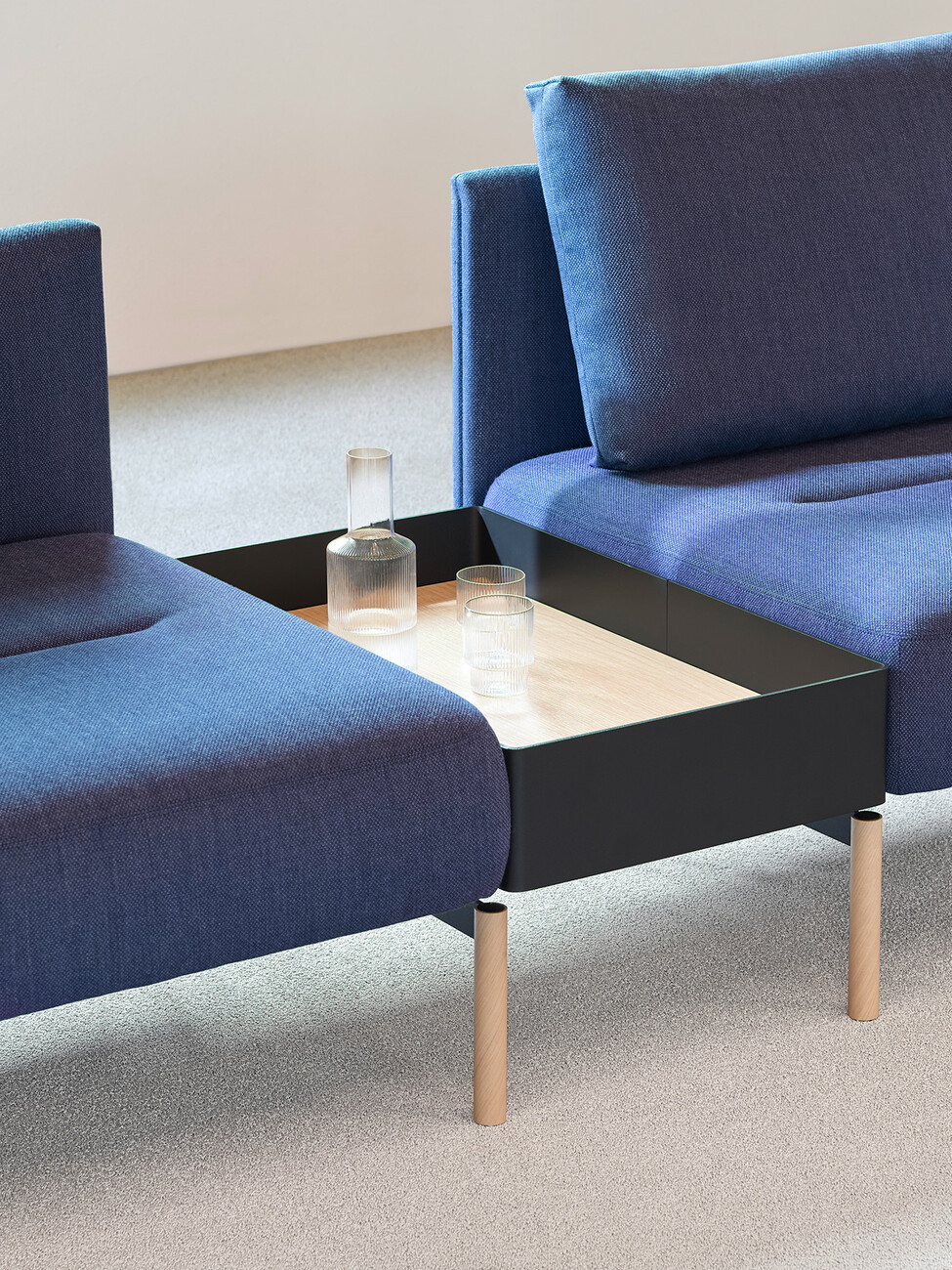Modular Furniture for Transitional Spaces
In cooperation with its long-standing partners Markus Jehs and Jürgen Laub, the contract designer furniture makers from southern Germany have created "oval", a cozy lounge system suitable for a wide range of settings – from a classic office landscape or a hip co-working space through to public venues such as libraries or hotels. “We discern a lot of potential in these interface and transitional spaces,” explains Philip Brunner, Managing Director at Brunner. “That’s why we were keen to launch a series enabling such zones to be furnished in a way that is appealing, comfortable, practical, and flexible. That is the whole idea behind ‘oval'’ to create spaces that people like to frequent, where they meet, spend time together and things can develop.”
“oval” is a modular set of upholstered furniture consisting of various elements: There are seating islands, but also cabins that offer greater privacy by being less open, as well as single-seaters and variable benches that can, if desired, also be fitted with castors. “As a shape ‘oval’ has two advantages: First, you perceive the space quite differently when you sit on an oval seat. After all, when someone walks up to a sofa they always sit in the corners,” comments designer Markus Jehs when outlining the designer duo’s approach. “Never in the middle. And yet you can’t sit comfortably in the corners. You always need a base, a cushion.” What’s more this shape makes a pleasant contrast to offices that often have an angular footprint and as Jürgen Laub adds, “the second advantage is: If you set up several islands, people find moving around them more pleasant."
In fact, when furniture is predominantly rounded it structures the surrounding spaces in a radial, curving manner. This not only creates a visual contrast to the largely sharp-edged, linear business architecture found today. It also creates softer routes as described by Laub – and we need only look at nature to realize that curved paths are far closer to how humans move than straight ones. It is no coincidence that the “discovery” of the s-shaped paths was one of the great innovations in the historical design of the classic English gardens, which allowed people as they walked to experience nature in a completely different way. Not that this perception has ever changed since: There is hardly an open space with a radial layout in which curved trails and short-cuts have not crept in. Essentially, people prefer to move along curved lines.
The individual seating elements of “oval”, whose delicate frame of round tubular steel makes them appear as light as if they were floating, can be combined as desired and as required. Say a communicative setting using many elements, or a small group for greater focus, or arranged singly with panels that can be high or lower. They have mobile components and are variable in color with every element featuring between one and three colors. Further visual accents can be set, for example by a joint seam made of leather as an alternative to the continuous standard double seam. The high-quality upholstery made of molded foam with a pocket spring core insert ensures that “oval” is not only practical to use but is also comfortable. Depending on the element and how it is to be used, there are electrification options, not to mention added features like storage and tray tables.
Incidentally, having such furniture also gives you a good reason to go to the office – not least of all to get new ideas in an inspiring environment that makes a change from remote working, argues Markus Jehs: “People are social beings. And we need to interact. So if people stop going into companies to work the corporate culture will also be eroded at some point.” People strike up conversations in waiting areas, in the "transitional spaces" when fetching a coffee, at hubs between offices – on furniture such as that offered by “oval”. Which is “where the really interesting things happen rather than sitting around a conference table in meetings scheduled for 2-3 p.m., where everyone is relieved when it’s all over,” says Markus Jehs and laughs. And adds: “That is certainly not the case with 'oval'. It’s more like sitting in front of an open fire at home.”

